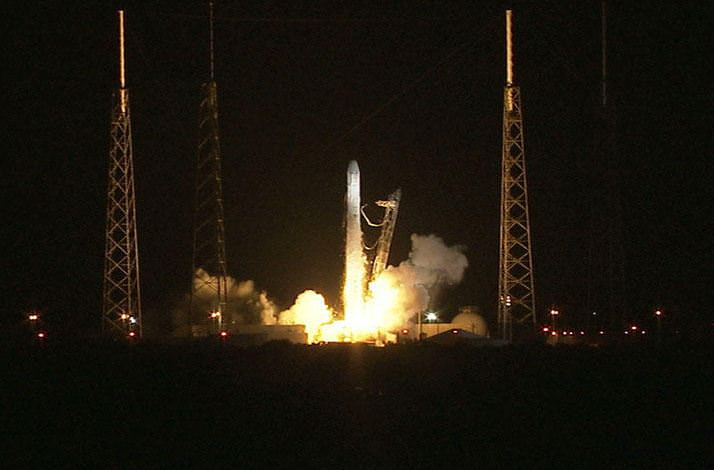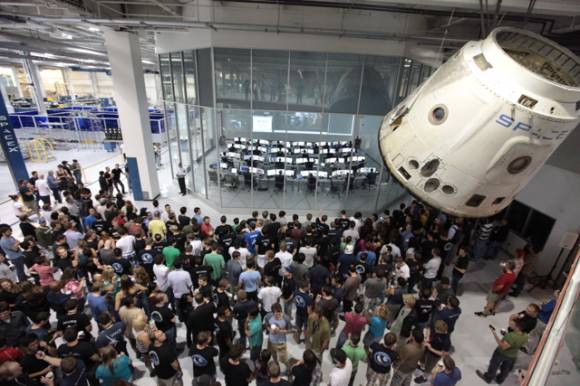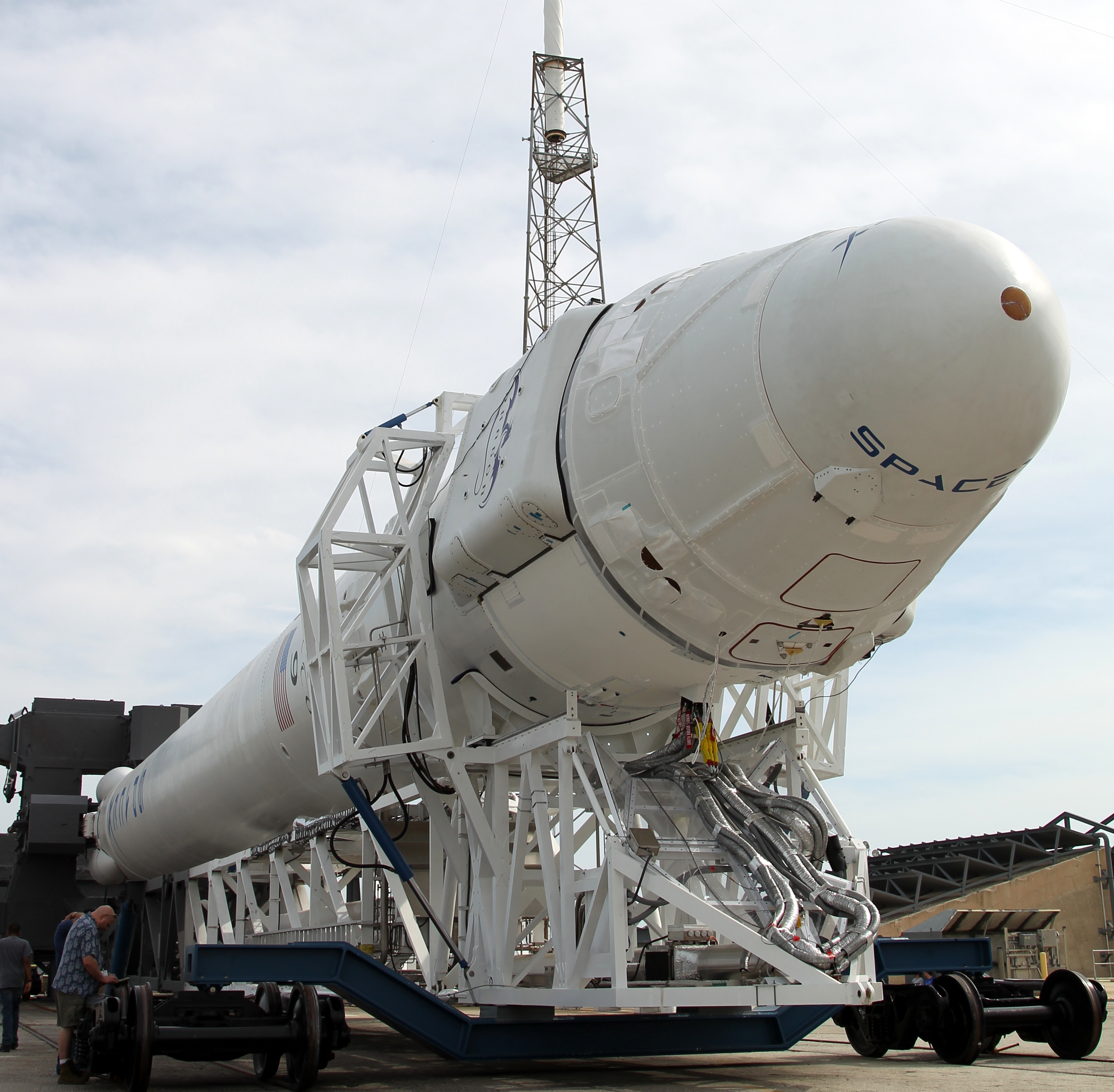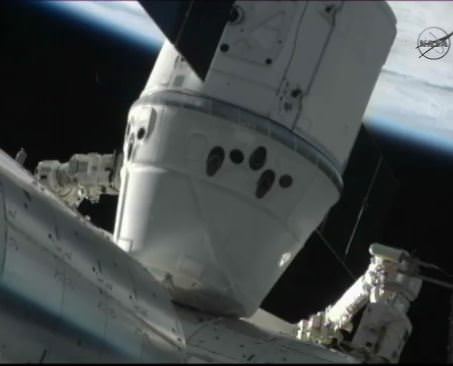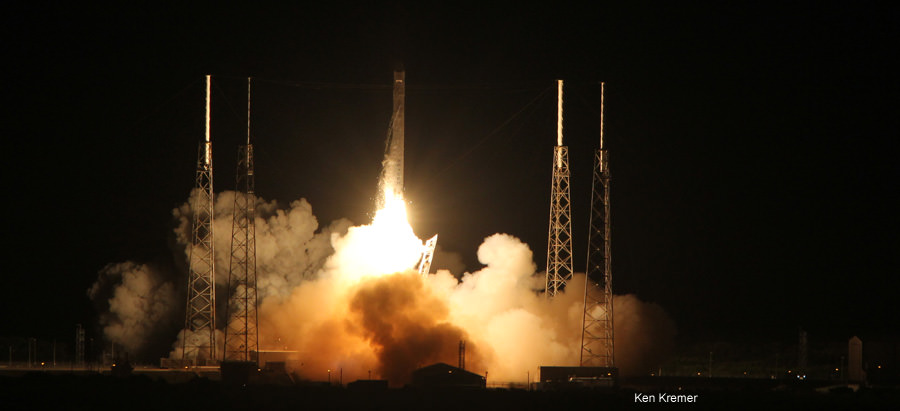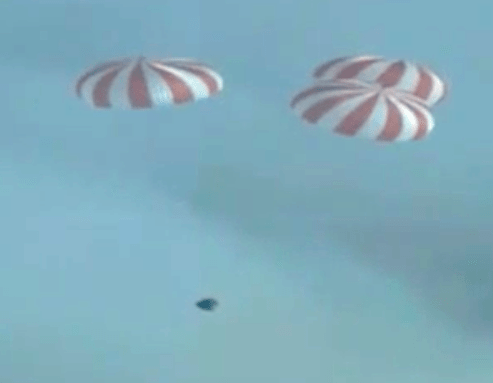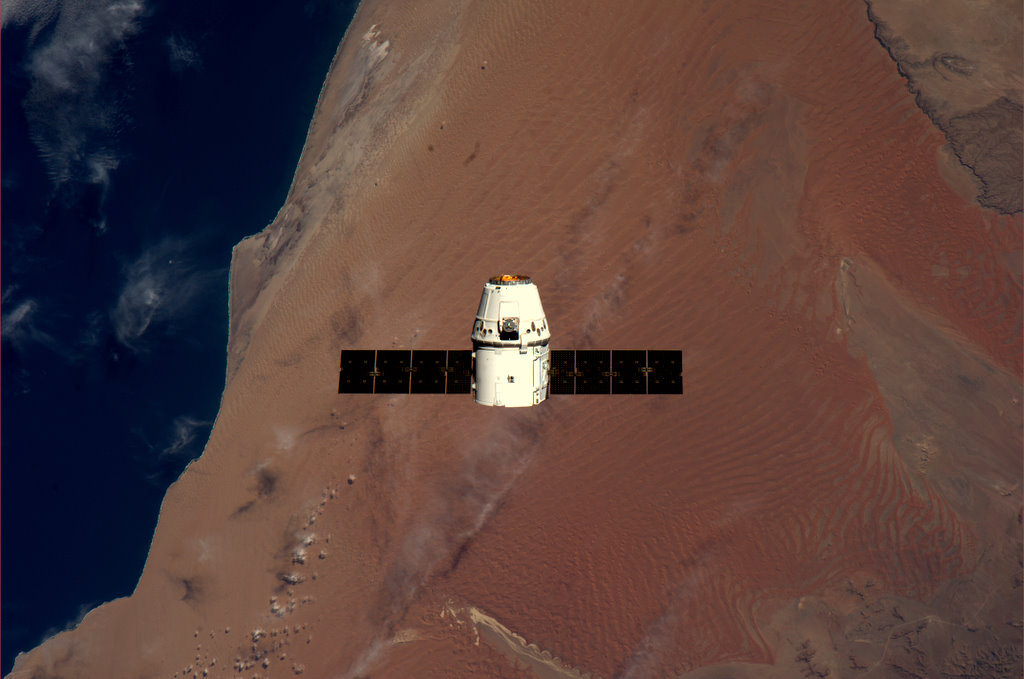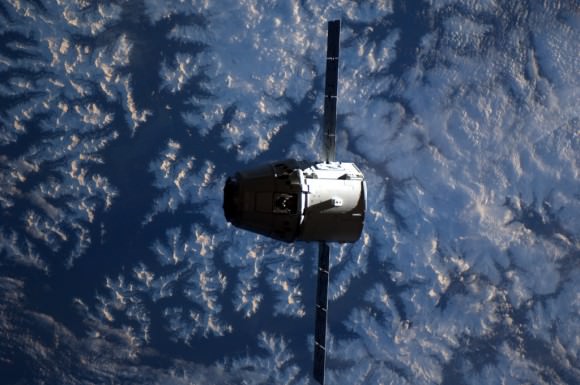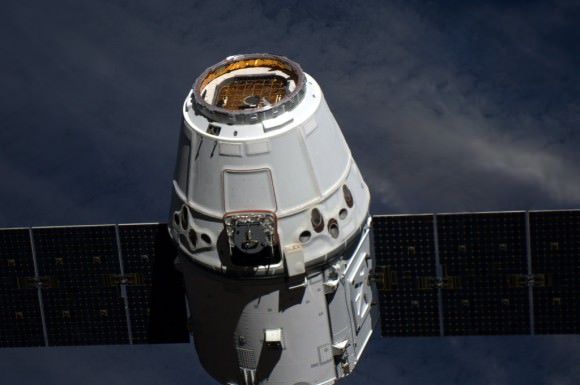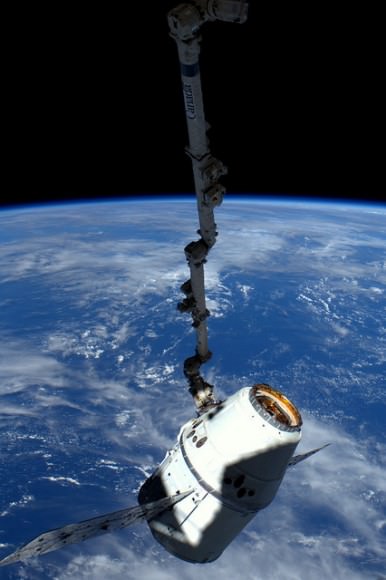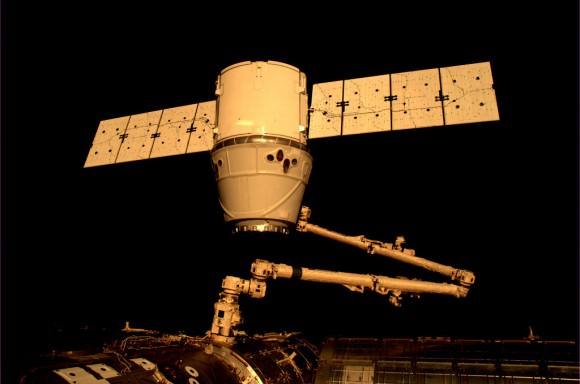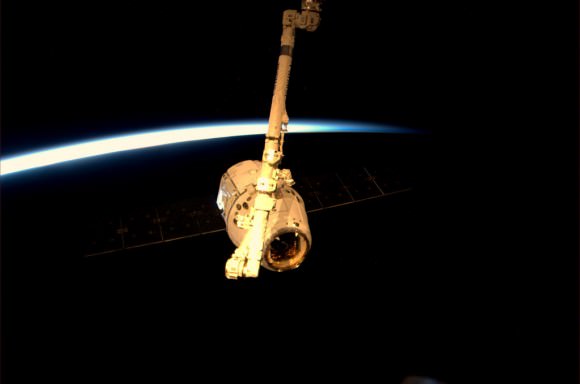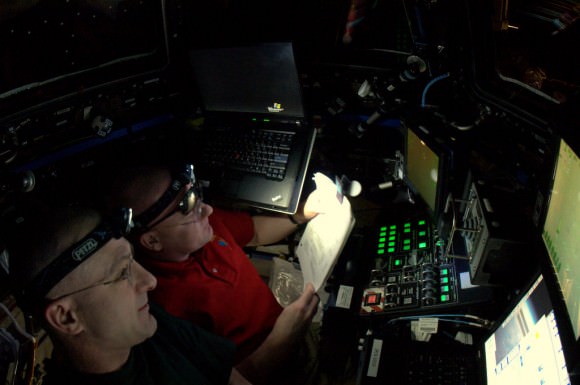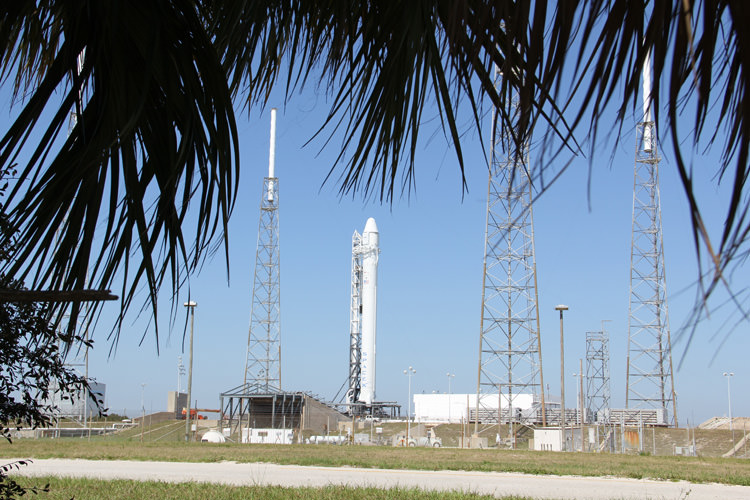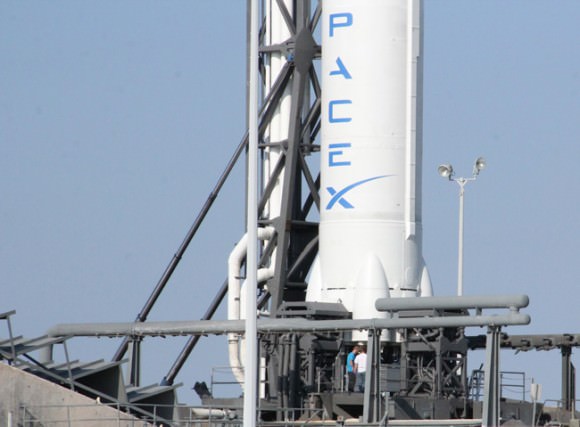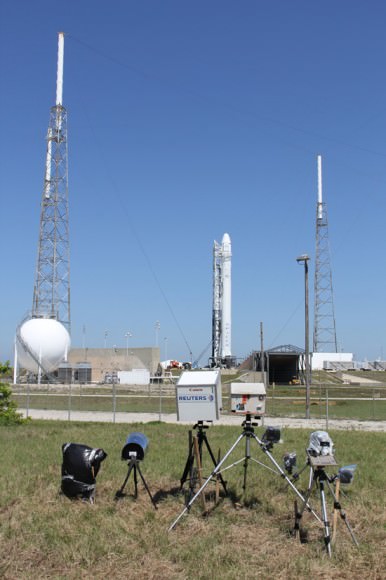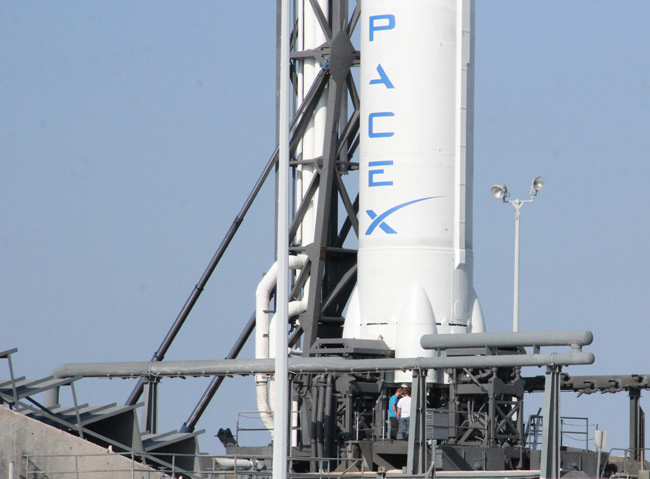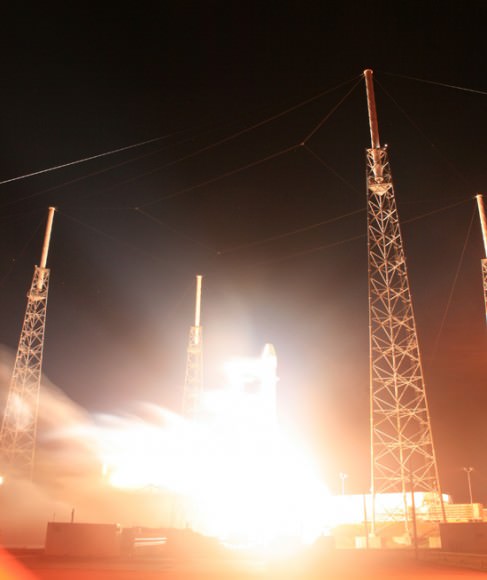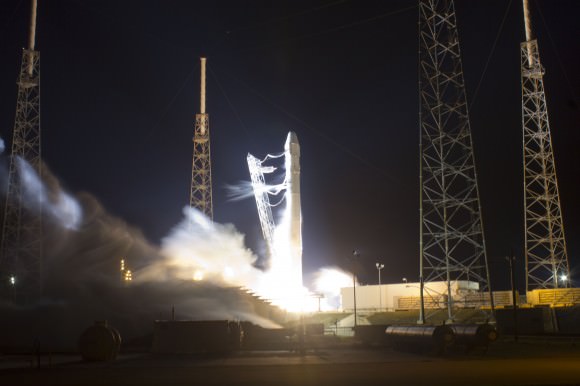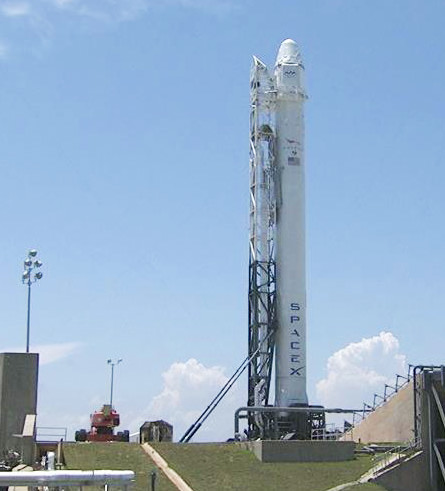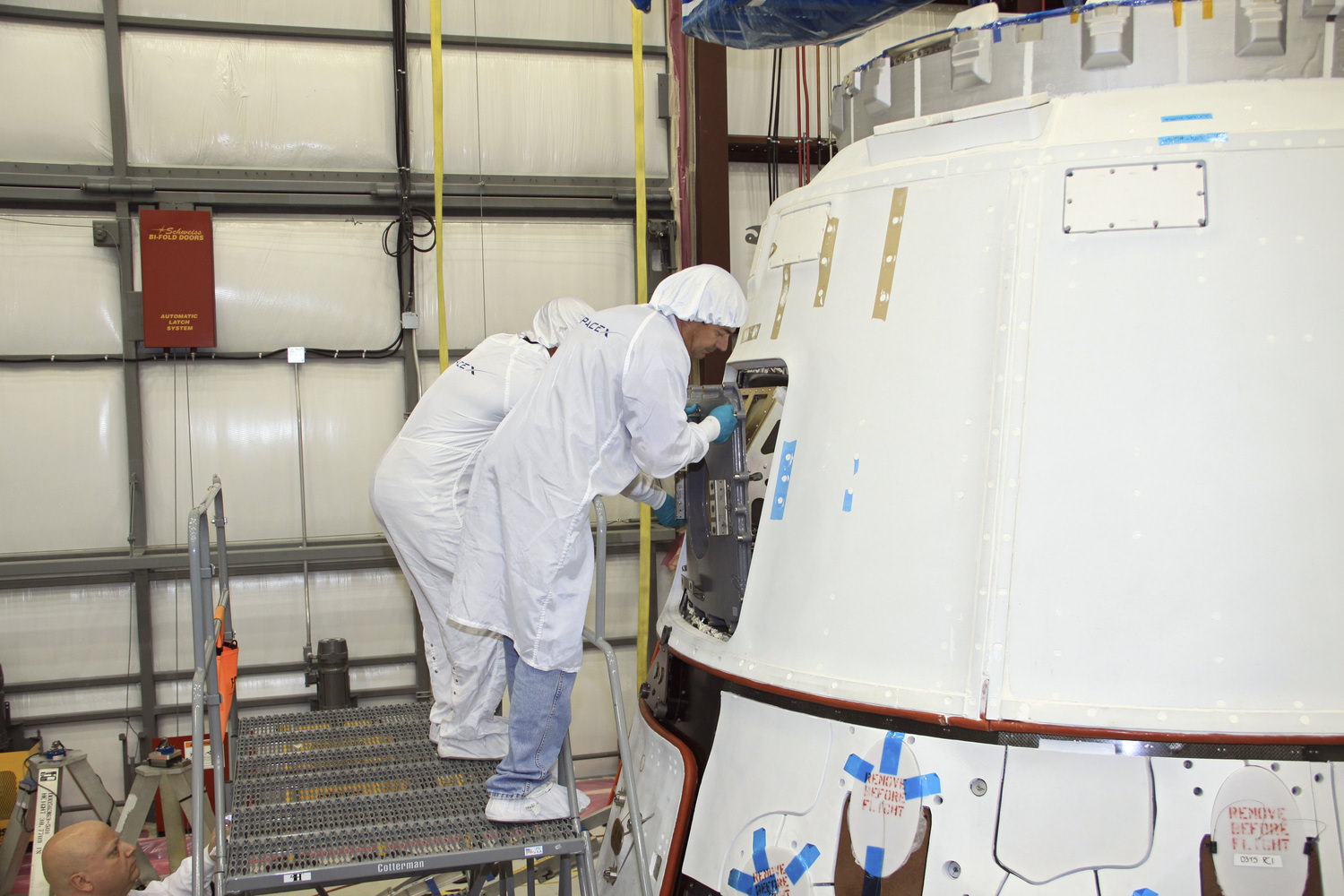The launch of SpaceX’s Falcon 9 rocket sending the Dragon capsule to orbit. Credit: KSC Twitter Feed
SpaceX has successfully launched the first official Cargo Resupply Services (CRS) mission to the International Space Station. The commercial company’s Falcon 9 rumbled rocket to life at 8:35 EDT on Oct 7 (00:35 UTC Oct. 8) in a picture perfect launch, sending the Dragon capsule on its way in the first of a dozen operational missions to deliver supplies to the orbiting laboratory. The launch took place at Launch Complex 40 at Cape Canaveral Air Force Station in Florida, just a few miles south of the space shuttle launch pads.
“This was a critical event for NASA and the nation tonight,” said NASA Administrator Charlie Bolden after the launch. “We are once again launching spacecraft from American soil with supplies that the ISS astronauts need.”
Watch the launch video below:
All the major milestones of the launch ticked off in perfect timing and execution, and the Dragon capsule is now in orbit with its solar arrays deployed. The Dragon capsule separated from the Falcon 9 about 10 minutes and 24 seconds after liftoff. Dragon should arrive at the ISS on Oct. 10 and the crew will begin berthing operations after everything checks out.
All three members of the current ISS crew were able to watch the launch live via a NASA uplink to the ISS, and Commander Suni Williams passed on her congratulations to the SpaceX team, saying “We are ready to grab Dragon!”
Williams and astronaut Akihiko Hoshide will use the CanadArm 2 to grapple the Dragon capsule around 7:22 a.m. EDT (11:22 UTC) Wednesday, moving it to a berthing at the Earth-facing port of the forward Harmony module.
Even though SpaceX sent the Dragon to the ISS in May, that was considered a demonstration flight and this flight is considered the first operational mission.
“No question, we are very excited,” said SpaceX President Gwynne Shotwell just before the launch. “Everyone was very excited in May and we are very much looking forward to moving forward with the operational missions.”
Dragon is carrying approximately 450 kg (1,000 pounds) of supplies, including food, water, scientific experiments and Space Station parts. There are also 23 student experiments from the Student Spaceflight Experiments Program (SSEP) involving 7,420 pre-college students engaged in formal microgravity experiment design, according to SSEP director Dr. Jeff Goldstein.
SpaceX and NASA revealed this weekend a special treat is on board a new freezer called GLACIER (General Laboratory Active Cryogenic ISS Experiment Refrigerator): Blue Bell ice cream, a brand that is a favorite of astronauts training at the Johnson Space Center in Houston. The freezer will be used to return frozen science experiments to Earth.
In the next three days, Dragon will perform systems checks, and start a series of Draco thruster firings to reach the International Space Station.
Dragon will return a total of 750 kg (1,673 pounds) of supplies and hardware to the ground. NASA says Dragon’s capability to return cargo from the station “is critical for supporting scientific research in the orbiting laboratory’s unique microgravity environment, which enables important benefits for humanity and vastly increases understanding of how humans can safely work, live and thrive in space for long periods. The ability to return frozen samples is a first for this flight and will be tremendously beneficial to the station’s research community. Not since the space shuttle have NASA and its international partners been able to return considerable amounts of research and samples for analysis.”
Dragon is currently scheduled to return to Earth at the end of the month, splashing down in the Pacific Ocean on October 29.
1000 SpaceX employees watch Falcon 9 and Dragon launch, at the Hawthorne, California headquarter. Credit: SpaceX
Taking a cue from the Mars Science Laboratory “Mohawk Guy” this SpaceX employee watching from Hawthorne sports a blue mohawk with a SpaceX logo shaved on her head. Credit: SpaceX.
Here’s a shorter video version of the launch from SpaceX:

